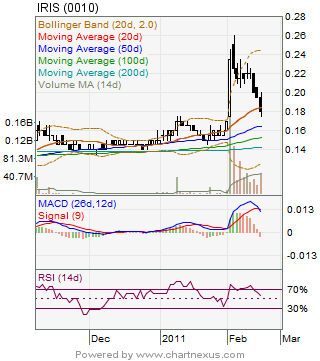Investing in penny stocks can be a lucrative endeavor, but what about shorting them? Short selling penny stocks is a unique strategy that allows investors to profit from the decline in stock prices. In this article, we will explore the ins and outs of shorting penny stocks, from understanding the basics to executing successful trades.
Whether you’re a seasoned investor or just starting out, this guide will provide you with valuable insights into the world of short selling.
Shorting Penny Stocks: The Basics
Short selling involves borrowing shares from a broker and selling them on the open market, with the intention of buying them back at a lower price. This strategy is based on the belief that certain stocks are overvalued and will eventually decline in value.
When shorting penny stocks, it’s important to consider their high volatility and susceptibility to manipulation. Finding available shares to borrow can be challenging due to limited supply. Thorough research on both the company and its industry is crucial before considering shorting a penny stock.
Identifying Stocks for Shorting
To identify stocks suitable for shorting, consider weak financials, negative news, poor market sentiment, and signs of impending dilution. Analyze declining revenue growth, increasing debt levels, negative cash flow, and deteriorating profit margins. Monitor industry dynamics and trends that could impact a stock’s performance.
Stay informed about lawsuits, scandals, regulatory changes, or management shake-ups. Combining fundamental analysis with market research increases the chances of finding stocks poised for decline. Approach short selling cautiously with proper risk management strategies in place.
In summary, when seeking stocks for shorting, consider weak financials, negative news or events, poor market sentiment, signs of impending dilution, and analyze market trends and industry dynamics. Thorough research helps identify stocks likely to decline in value.
Recognizing Shorting Opportunities
To identify shorting opportunities, it is essential to understand indicators, patterns, and market sentiment. Technical analysis tools like moving averages, support and resistance levels, trend lines, and chart patterns such as head and shoulders or double tops can provide insights into potential price reversals.
Negative news, investor skepticism, or a lack of interest in a stock can contribute to declining prices. Evaluating volume trends and relative strength can help confirm downward trends. By combining technical analysis with market sentiment and momentum indicators, traders can enhance their ability to spot shorting opportunities in penny stocks.
| Indicator/Pattern | Description |
|---|---|
| Moving Averages | Smoothes price data to identify trends |
| Support & Resistance Levels | Price levels where buying support/selling pressure occurs |
| Trend Lines | Connects consecutive highs/lows to indicate trend direction |
| Chart Patterns (e.g., Head & Shoulders, Double Tops) | Reoccurring patterns that signal trend reversals |
Remember the risks associated with short selling and exercise caution while developing a well-defined risk management strategy.
Getting Started with Shorting Penny Stocks
Choosing a reliable broker is crucial for short selling penny stocks. Look for brokers that offer access to a wide range of penny stocks, low borrowing fees, ample liquidity for short orders, and reliable customer support. To streamline the process, open a separate brokerage account dedicated solely to short selling.
This helps track short positions separately from long investments and allows for better risk management.
Executing the Short Sale
To execute a short sale, place the trade with your broker after identifying a suitable candidate. Specify the number of shares to borrow and sell at the current market price. Setting stop-loss orders is crucial, especially when short selling penny stocks, as they help limit potential losses if the stock price unexpectedly rises.
Choose a level that aligns with your risk tolerance and trading strategy for your stop-loss order. By executing the short sale carefully and implementing strategic stop-loss orders, you can navigate through the complexities of short selling more effectively.
Remember to choose a reliable broker who can provide valuable insights and support throughout this process.
Managing Your Short Position
To effectively manage your short position, regularly monitor stock price movements and stay informed about news and events that may impact your trade. Adjust stop-loss orders strategically to protect profits or limit potential losses.
By actively managing your short position, you can optimize profitability and make more informed decisions about when to exit the trade.
Closing Your Short Position
Determining when to close a short position is a critical step in managing your investments. There are several factors to consider when making this decision, including achieving your target profit, reaching a predetermined time frame, or encountering signs of a potential price reversal.
It is essential to regularly reassess the stock’s fundamentals and monitor technical indicators to make an informed choice.
When it comes to covering your short position, there are specific steps you need to take. The first step is buying back the borrowed shares from the open market. Ideally, you want to repurchase these shares at a lower price than what you initially sold them for, resulting in a profit.
However, timing is crucial as you want to execute this transaction strategically.
To effectively manage your short position, it’s important to stay updated on market trends and news that may impact the stock’s performance. Keep an eye out for any significant changes in the company’s financial health or industry outlook that could affect its value.
Additionally, monitoring technical indicators such as moving averages or trendline breaks can provide valuable insights into potential price reversals.
It’s worth noting that emotions should not guide your decision-making process when closing a short position. Instead, rely on objective analysis and stick to your predetermined strategy. Remember that markets can be volatile and unpredictable, so it’s crucial to have clear exit criteria in place before entering any short positions.
In summary, closing your short position requires careful consideration of various factors such as target profit, time frame, and indicators of potential price reversals. By regularly reassessing the stock’s fundamentals and technical indicators, you can make informed decisions about when to cover your short position.
Remember to execute these transactions strategically and remain objective throughout the process.
Lessons from Experienced Traders
Learning from experienced traders provides valuable insights into successful penny stock shorts. By studying case studies of effective short strategies, common patterns and approaches can be identified.
Experienced investors emphasize thorough research, risk management, and emotional discipline when shorting penny stocks. Researching potential opportunities and risks is crucial before executing any short strategy. Effective risk management involves analyzing downside potential and setting appropriate stop-loss orders.
Emotional discipline is essential to avoid impulsive decision-making driven by fear or greed.
Continuously learning from both successes and failures is key. Reviewing past trades, identifying mistakes, and adjusting future approaches based on lessons learned are essential for long-term success.
Incorporating these takeaways into your trading practices improves the chances of successful penny stock shorts. Thorough research, effective risk management, emotional control, and continuous learning enhance the ability to identify profitable opportunities within the penny stock market.
[lyte id=’Utpw9M4iIGM’]







